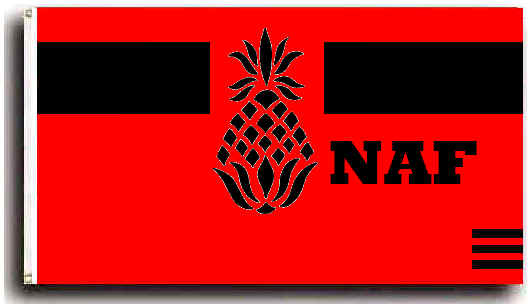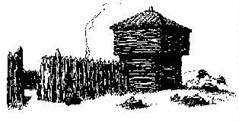|
.....
|
|

BILL
CUNNINGHAM
Captain
- Staff Writer |
Smoke Signals
Mar./Apr. '09
|
___________________________
JUST HOW
GOOD WERE THEY?
By: Bill
Cunningham
One of Alfred Jacob
Millerís painting has two trappers laid out with weakness,
about to devour a snake they had just managed to kill, their
first food in days. Miller and the rest of Stewartís party
had come upon them just in time to rescue them.
There are other
accounts, perhaps less dramatic, but just as real, of mountain
men/trappers/explorers wandering about the west and getting in
dire straits from lack of food or water or equipment. Based on
modern novels and movies this would seem to be impossible for
such knowledgeable, heroic personages. And many of us have
been raised on the assumption that those old mountain men
could get by on their own in any situation. But consider
Ramsey Crooks and his party when, working for Astor, traveling
in what is now Idaho country, they first nearly died of thirst
and later came close to starving to death. Had it not been for
some Indians who took pity on them and shared what little food
they had, they would have died. As it was one of the party
went insane and never did totally recover. Perhaps a better
known incident was Jedidiah Smithís trek across the Salt
Desert when he had to bury one of the party up to his neck in
the sand to keep him cool and out of the sun while he himself
went on for water.
It is my belief that
some of todayís buckskinners could teach many of the old
mountain men some survival skills. I do not recall ever
hearing of a fur trade era mountain man tracker who could
match the skills of Ty Cunningham or Joel Hardin (if you
donít know who they are Iíd suggest you get some of
the back issues of Primitive Archery magazine in which Ty
writes about tracking, or the book Tracker that Joel
Hardin put out. Fantastic stuff!
I know that Robert Ruark,
in The Old Man and the Boy had his grandfather say that
in the event that a mountain man had his rifle go bad heíd
merely fashion himself a bow and twist a string from rawhide
and make some arrows and survive with them. Much as I love the
book, I donít think so. First of all, I never read of a
mountain man making a bow (not to say it never happened, I
just havenít heard about it). Second, I have made a
bowstring from rawhide. It sucked. There is much better
materialósuch as sinew or stinging nettle or the inner bark
of several trees, or yucca, to make cordage, and thus
bowstrings, from. To make an arrow that flies straight is not
a spur of the moment thing, especially using primitive tools,
and although a flint or bone arrowhead is functional, knapping
is a skill I doubt many mountain men developed. But, by gum, I
know many modern mountain men who have!
The tales of original
mountain men who, for whatever reason, ended up alone,
weaponless, and naked, are a theme that often surfaces, both
in the far west and on the Santa Fe Trail. But how many of
those tales speak of one who then appeared at a fort fully
outfitted and fat? Colter didnít. Glass didnít. But a
buckskinner I used to know who was called Knapper (I never
knew his street name) did. He would take off in the spring
with no clothing and no gear and show up later fully clothed,
carrying a bow and arrows and more poundage than he weighed
when he left a month before. And Knapper was not unique. There
are numerous others who have, and do, the same (well, perhaps
not totally naked when they leave).
As a community, we share
our knowledge. We teach anyone who wants to know how to make
cordage, how to identify which mushrooms are edible, what
trees can provide an inner bark for toilet paper, which leaves
and plants can be chewed or brewed to get rid of a headache or
to stop the squirts. We know how to brain tan a hide (which,
for the most part, the mountain men depended on Indian women
to supply), or to make deadfalls, snares, and primitive fish
traps. Some of us know that a bull boat doesnít go in the
water flesh side out and that, properly built, it doesnít go
spinning down the stream like a tea cup, Bernard DeVoto to the
contrary! We can put together our own clothing and make our
own moccasins and to some extent repair our own firearms and
make our own archery gear. We can pack mules and horses and if
we had to we could pack and ride cows (well, maybeóread a
little book titled Ox Team Days).
The mountain men of the
fur trade era were survivalistsóhad they not been thereíd
have been more of them went under. But it is my belief that
many of todayís leather clad persons with all their
knowledge and experience could have kept right up with the
trappers and at times surpassed them. If you doubt that you
could have, then just keep studying the old journals and
combine those with the writings and teachings
of todayís experts and then getting out on the ground
and practicing.. Hang around with folks whose leathers have
that worn patina that comes not from skillful applications of
ďpretendĒ grime, but of actual use. Itís not hard to
spot the difference. Stop by an AMM or NAF (for a couple) camp
and youíll see the real thing.
I donít denigrate the
original mountain men. Some were a hoary old bunch of misfits
from the settlements. Most of them were contract labor who
came to the mountains for a year of specific types of work.
Even the best sometimes got into tough circumstances because
of bad luck but sometimes made mistakes out of lack of
knowledge. Just like us.
It is my belief, based on
the journals and diaries I have read, that the free trappers
knew much more about survival than did the majority of the
mountain population (the contract labor), but that even they did
not know everything. They only learned what they needed in
specific circumstances. We, on the other hand, read about the
things that not just one of them knew, but what all them,
collectively, knew. Those of us who really apply ourselves then
end up with more skills and knowledge than many of the
old-timers. So even though we donít live in those times, if we
had, those of us who have done the work today probably could
have fit right in among the best of yesterday.
Bill
Cunningham
 
___________________________
|